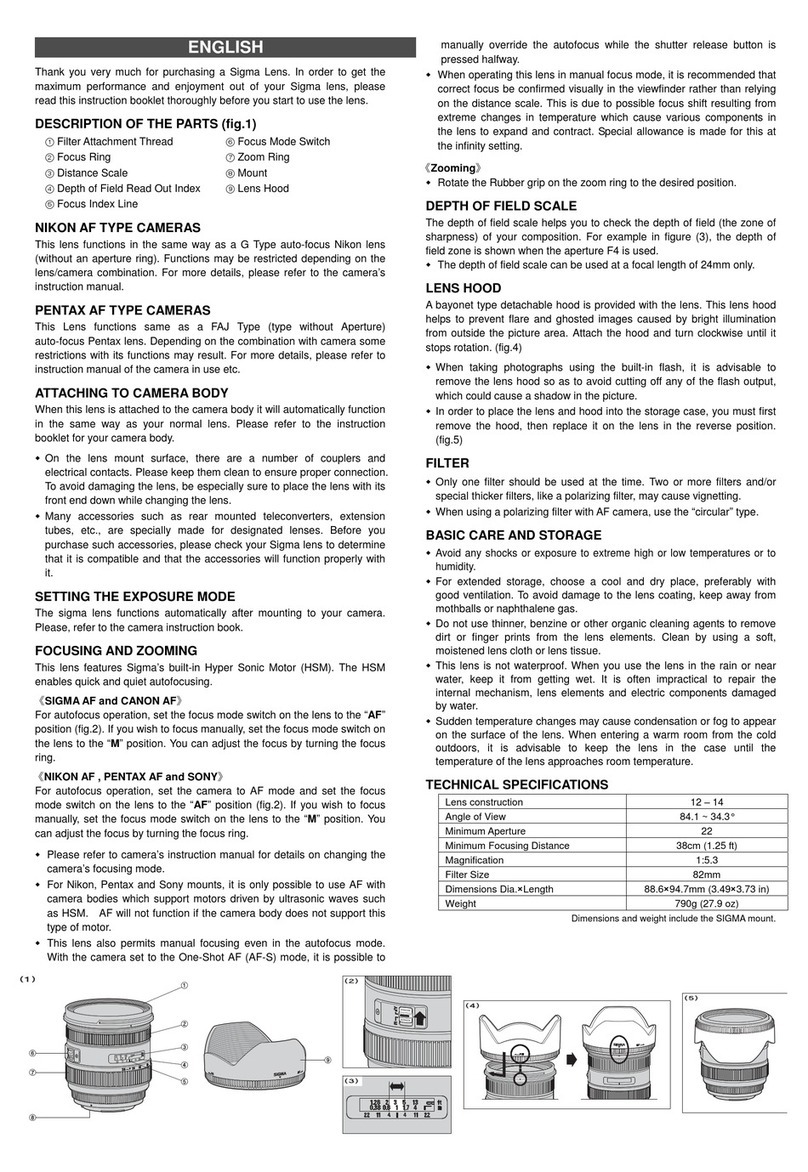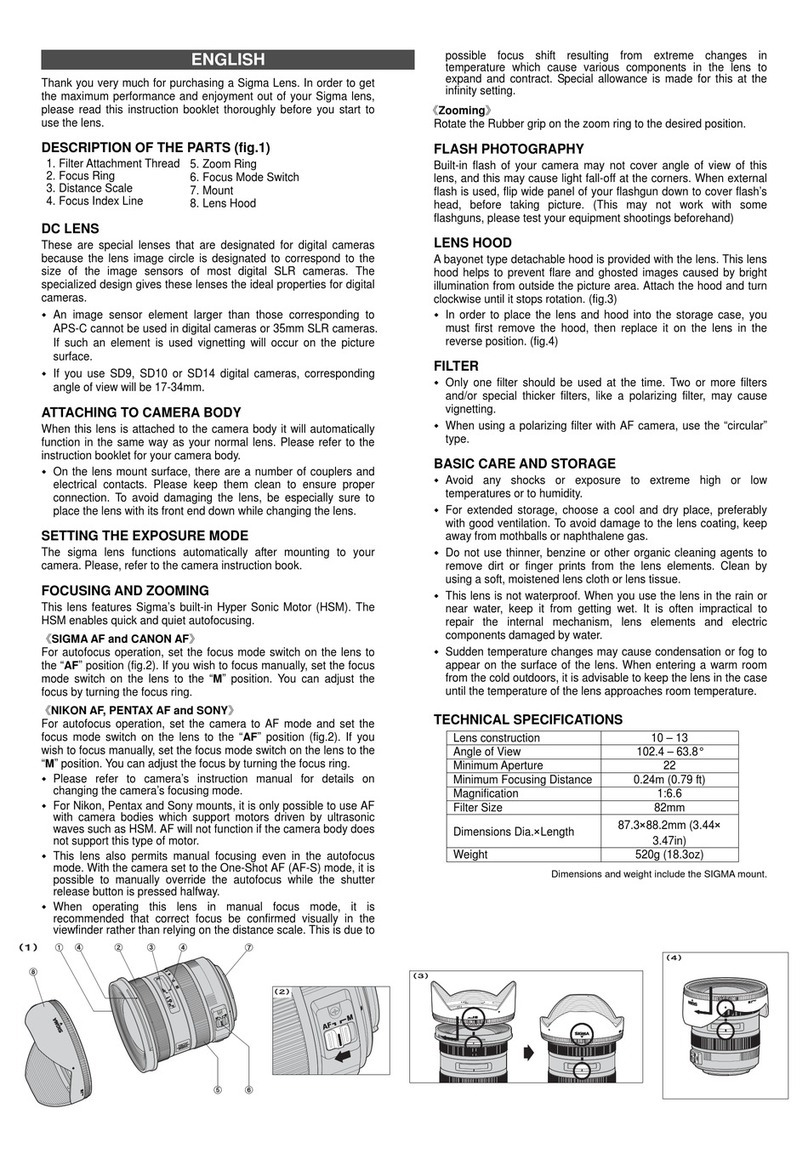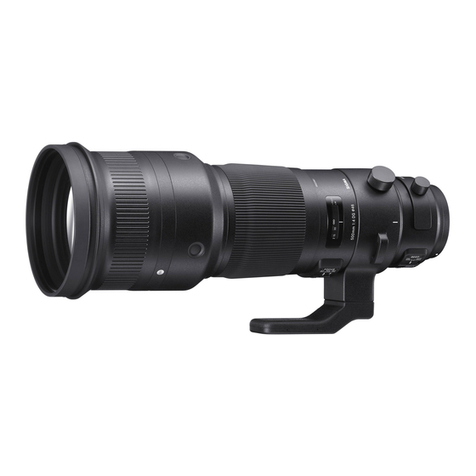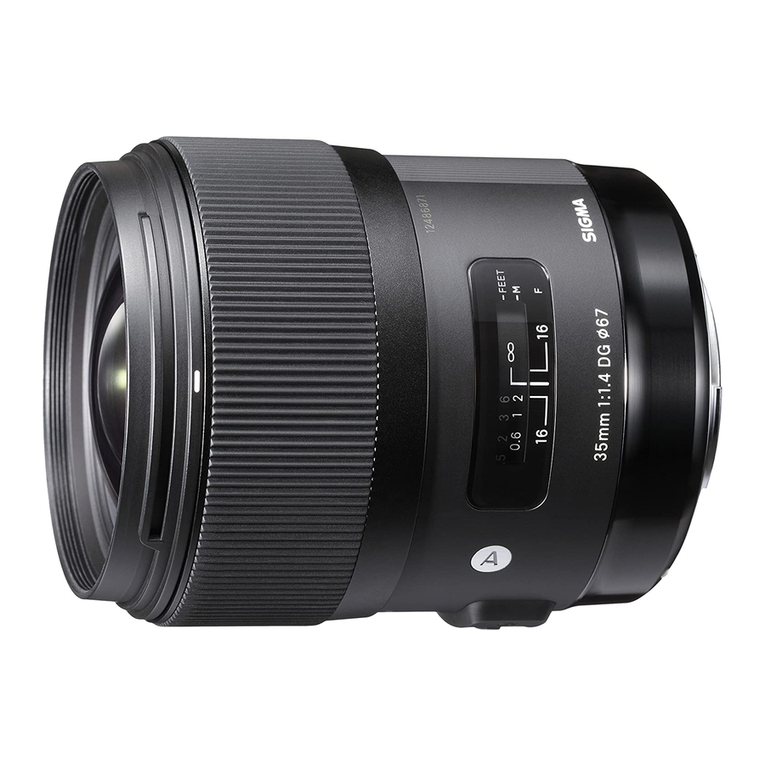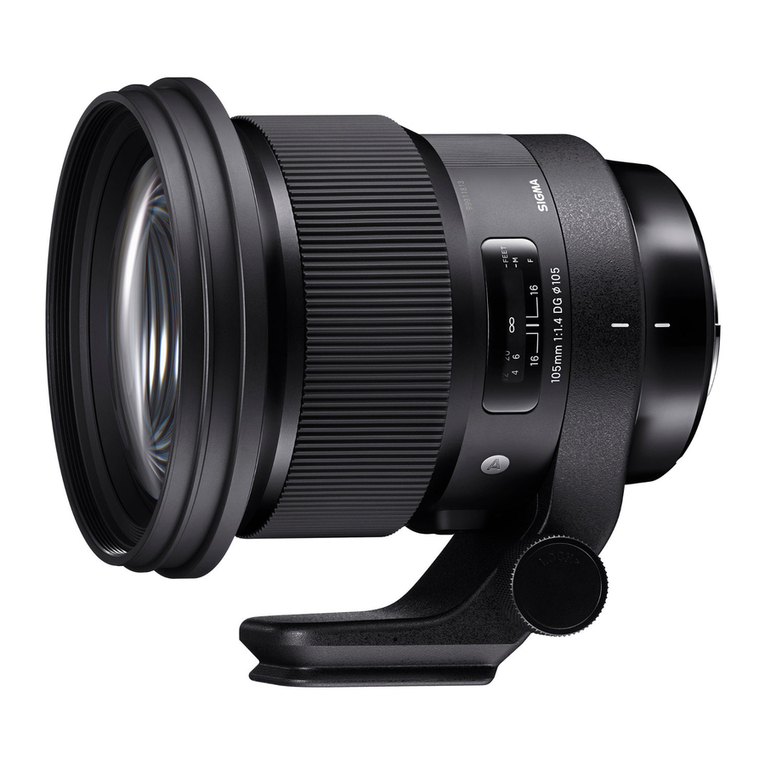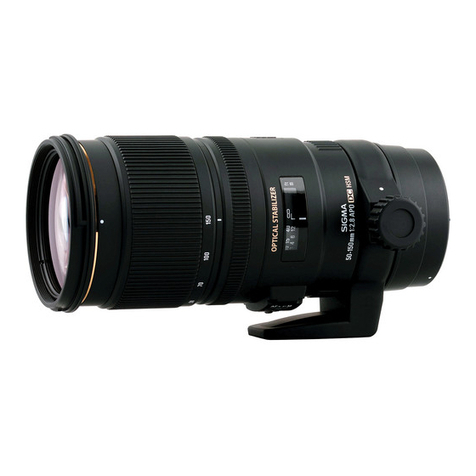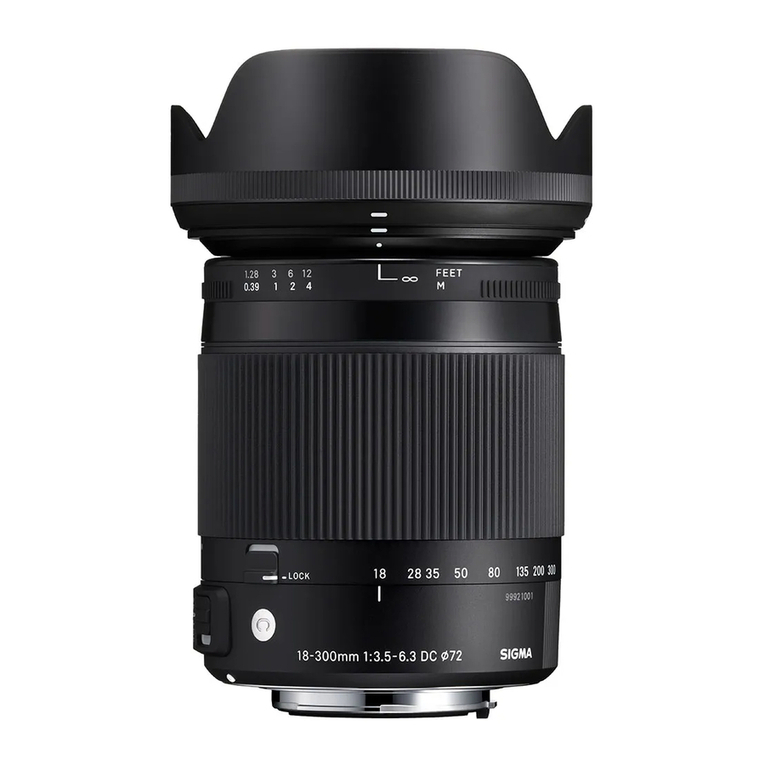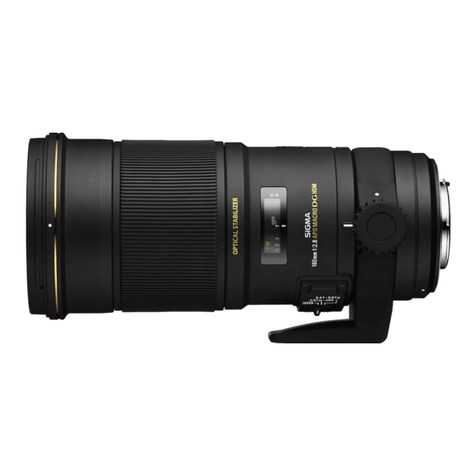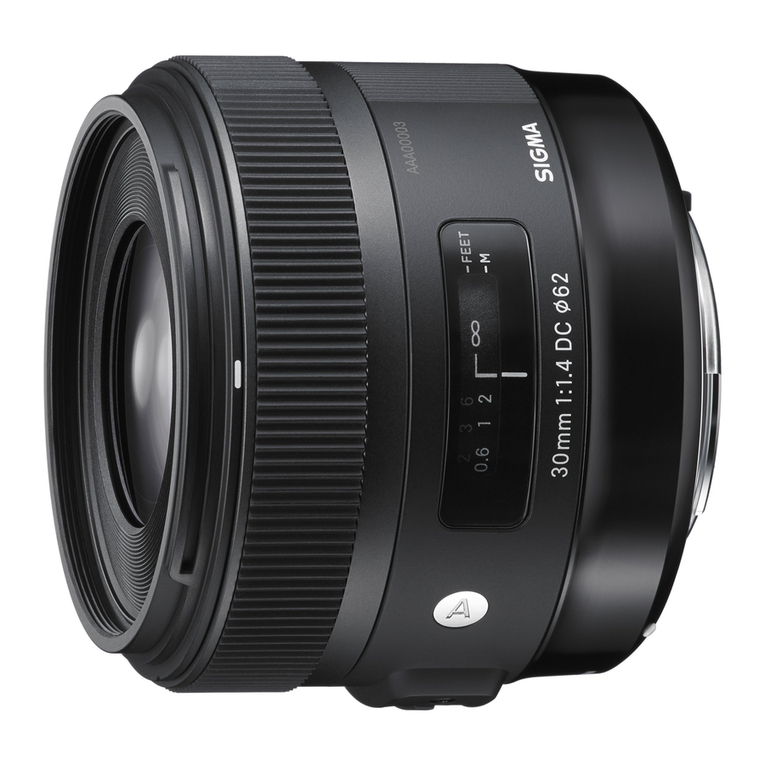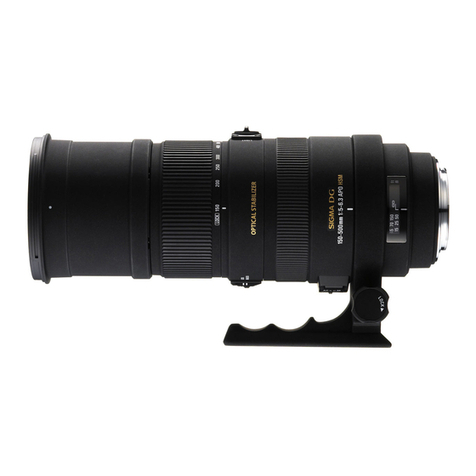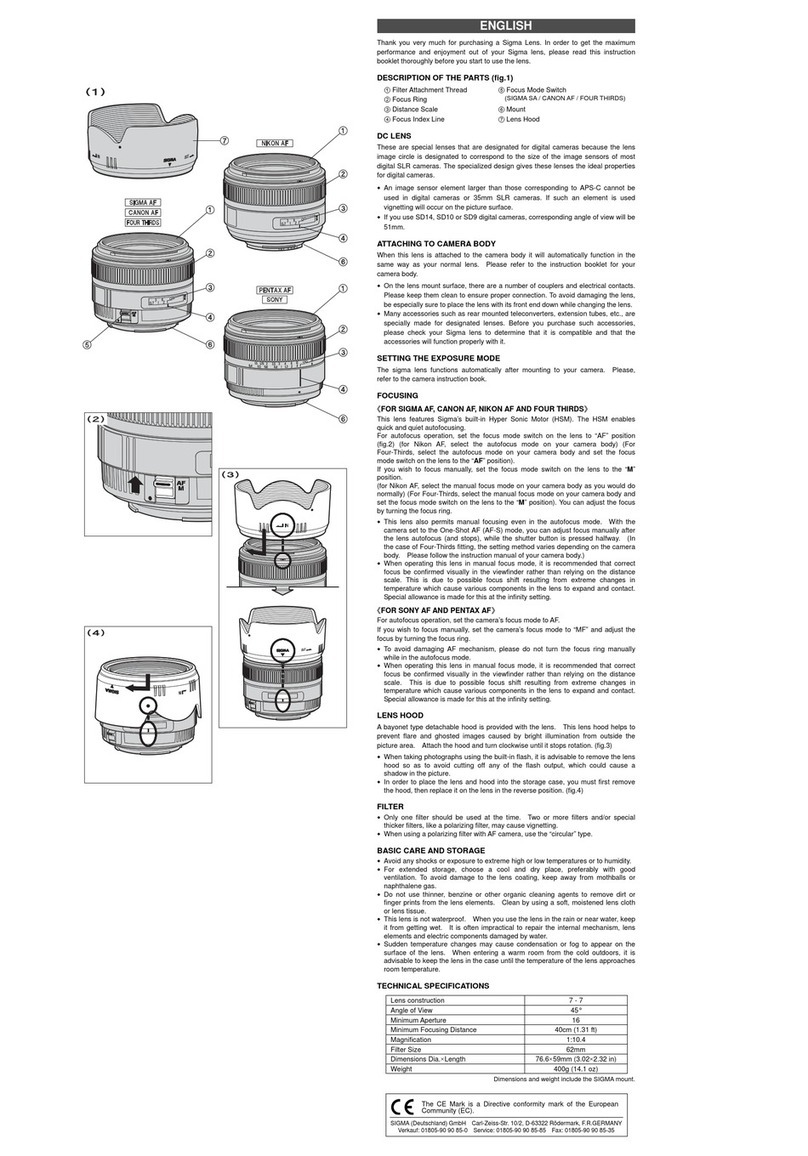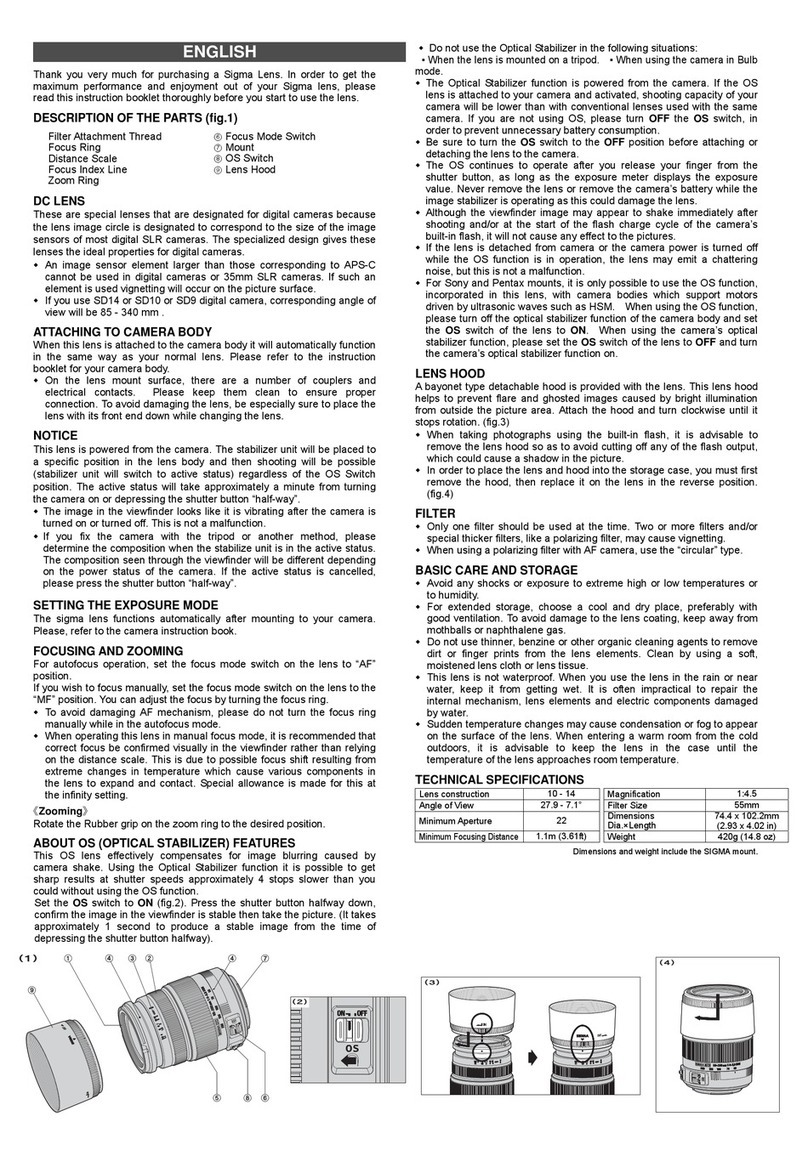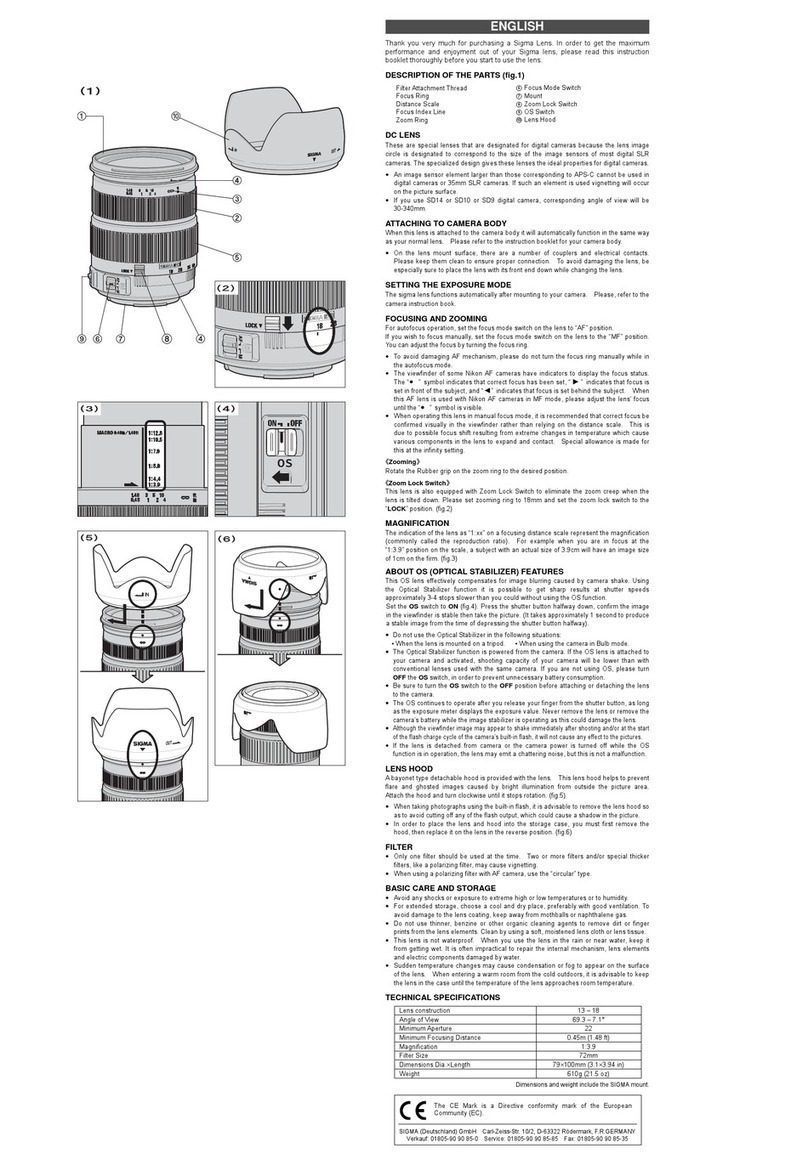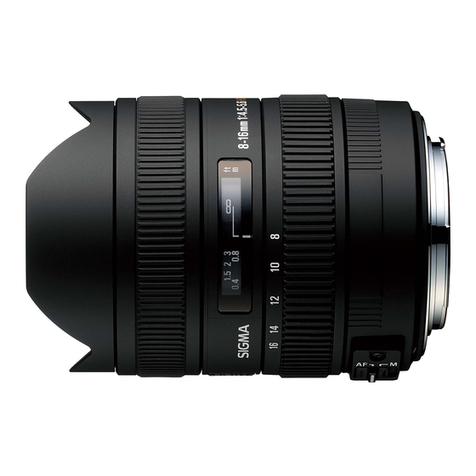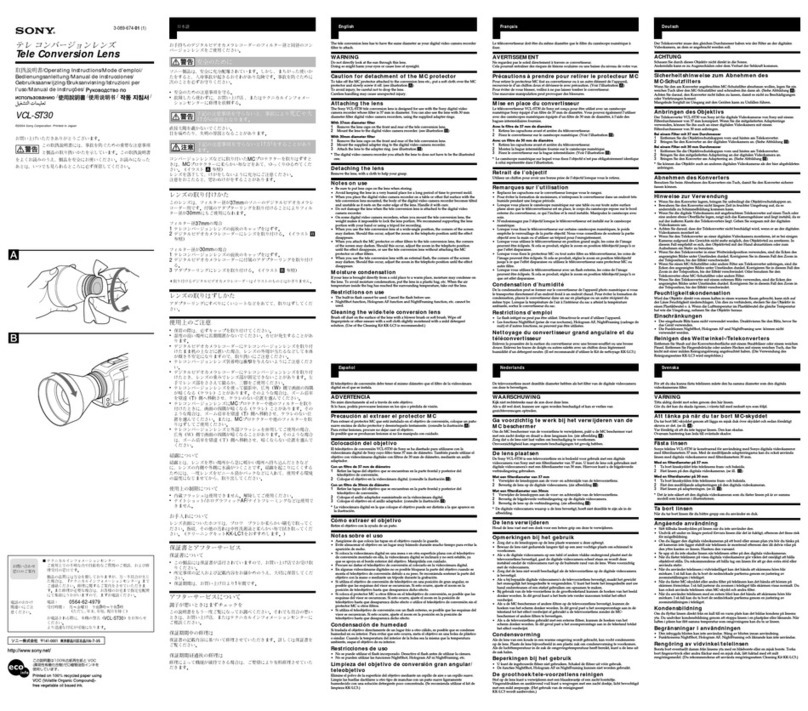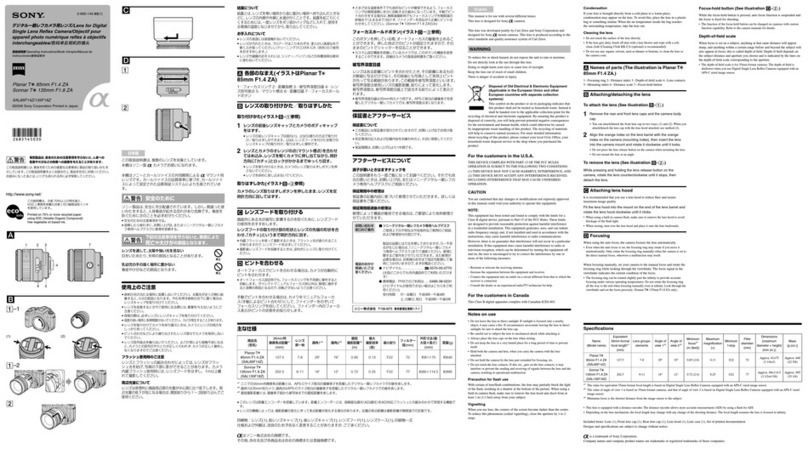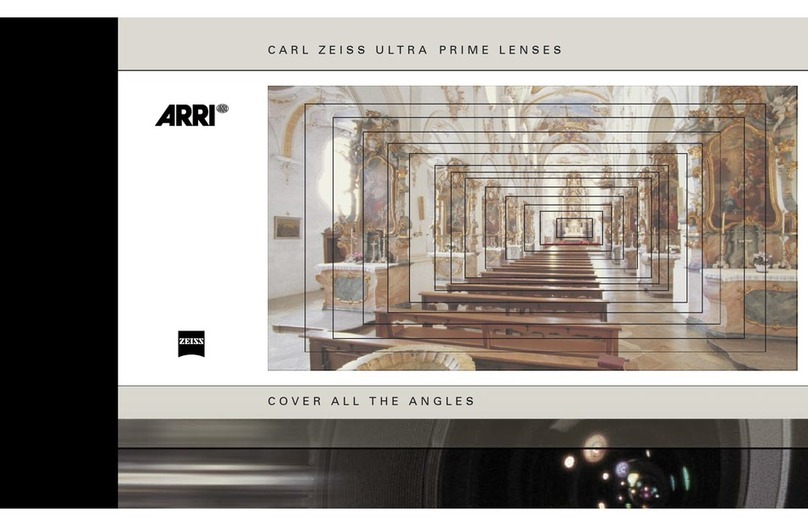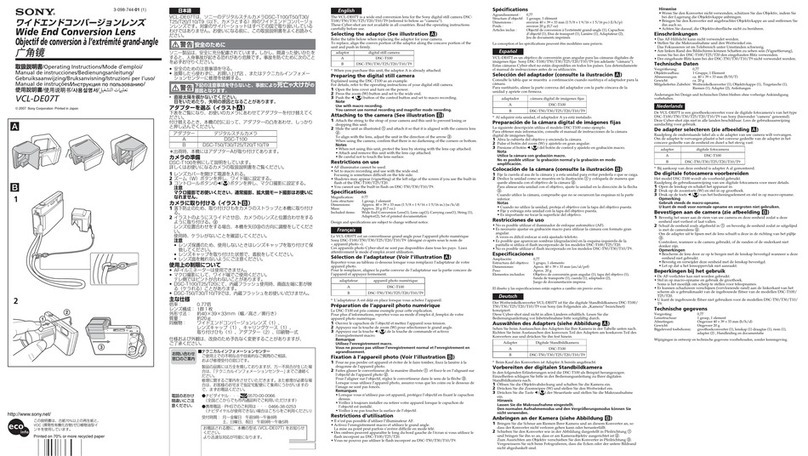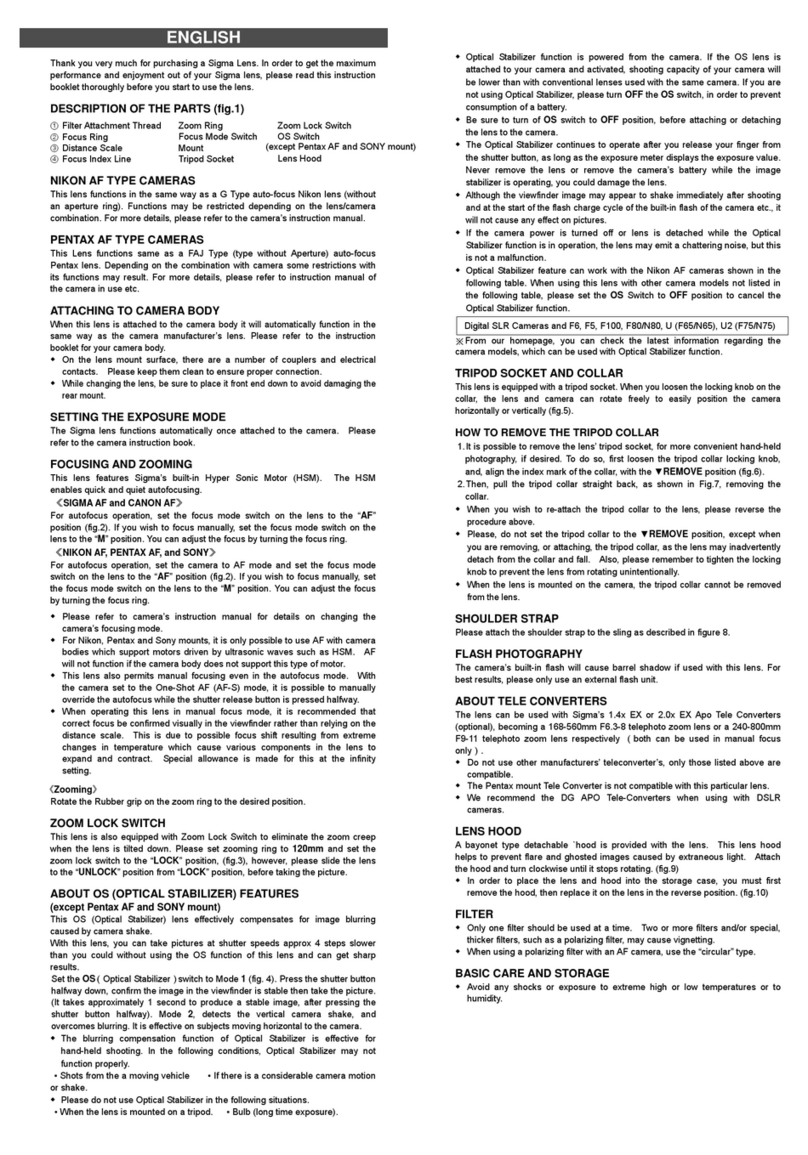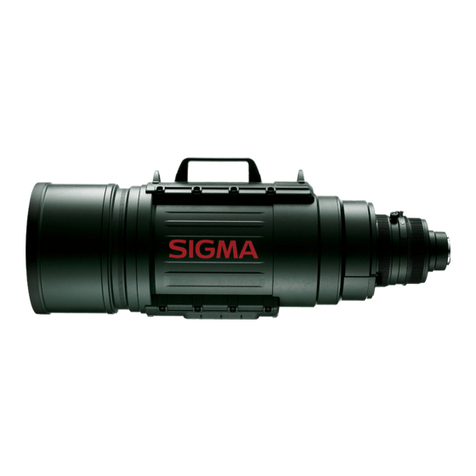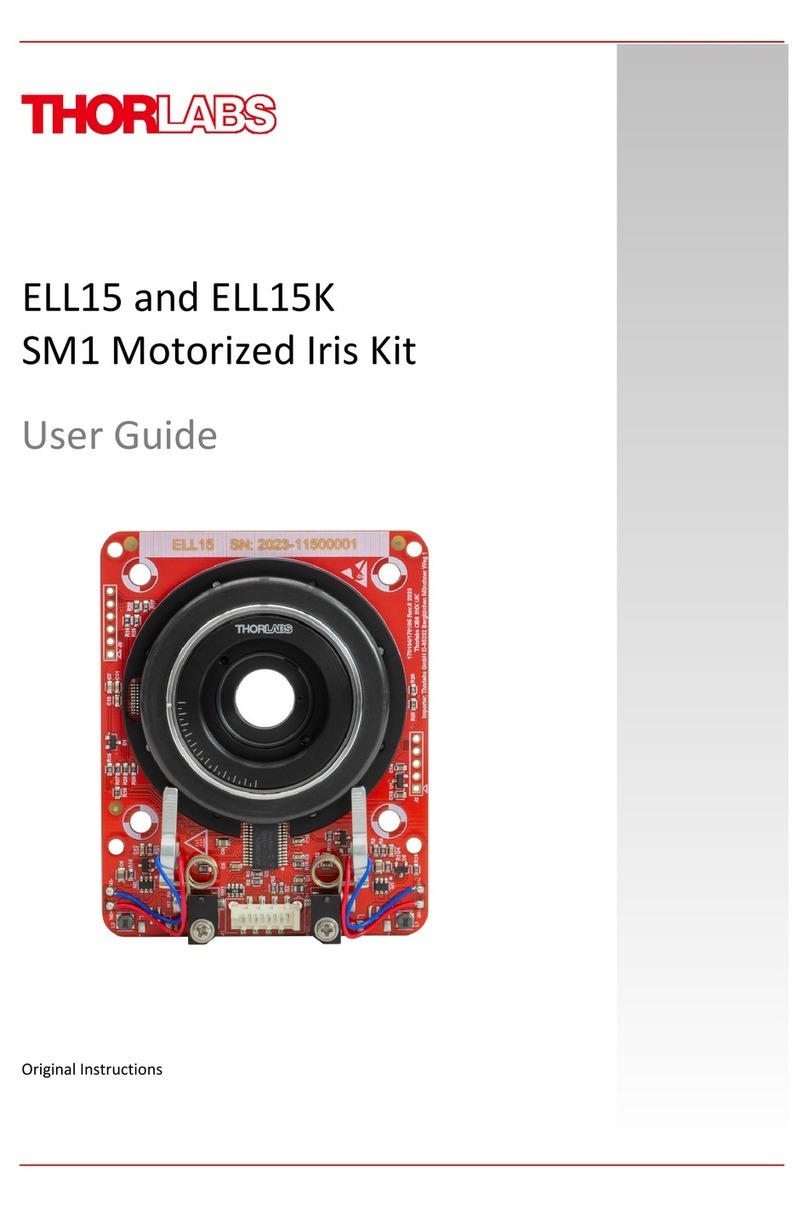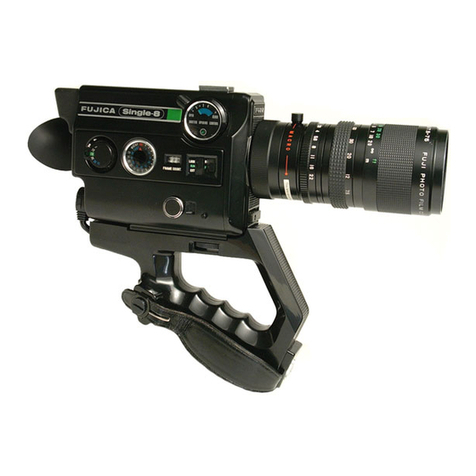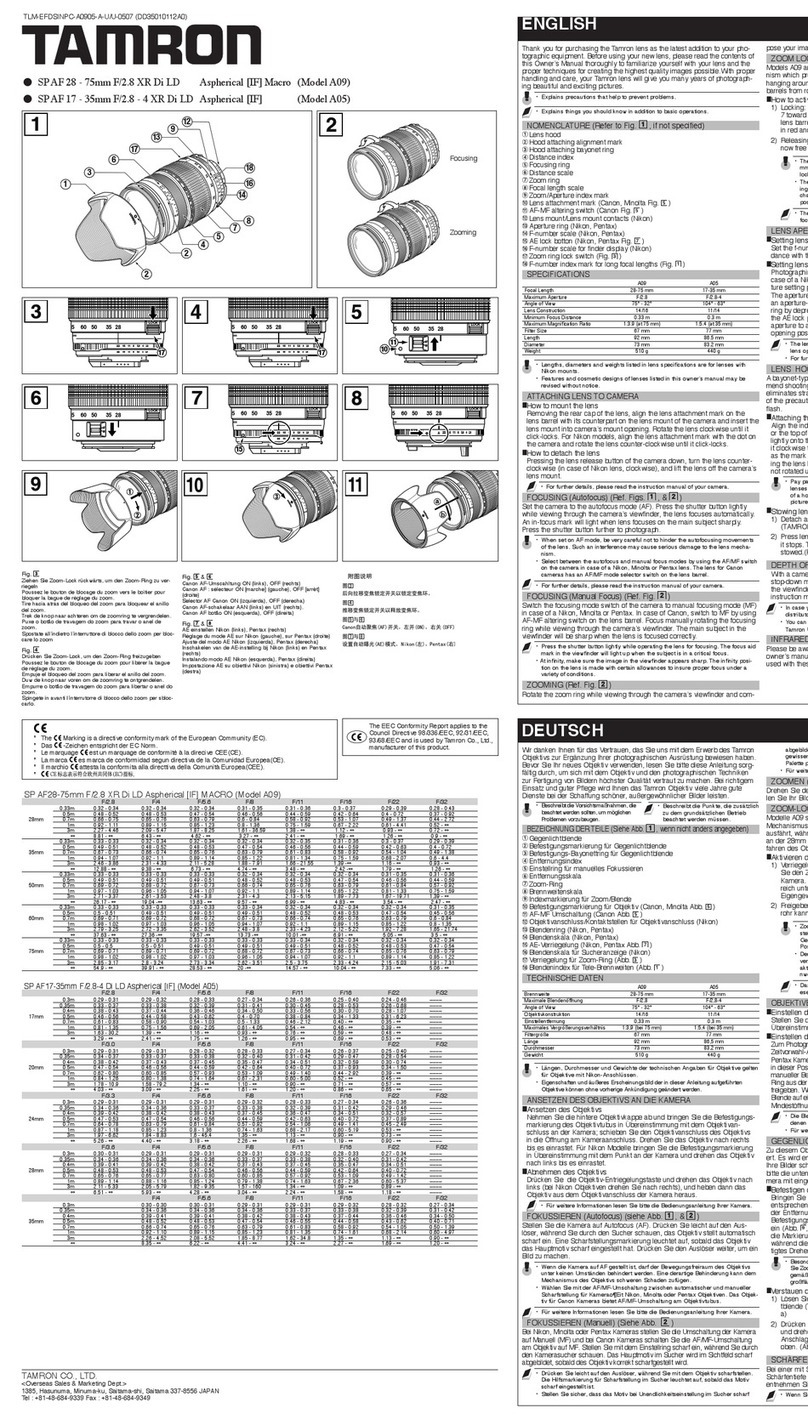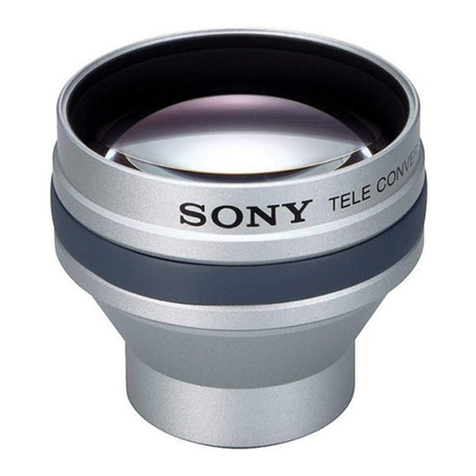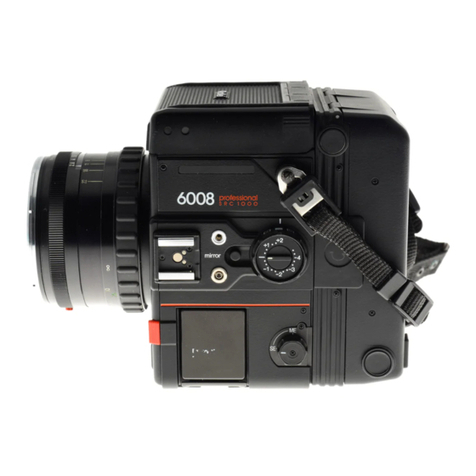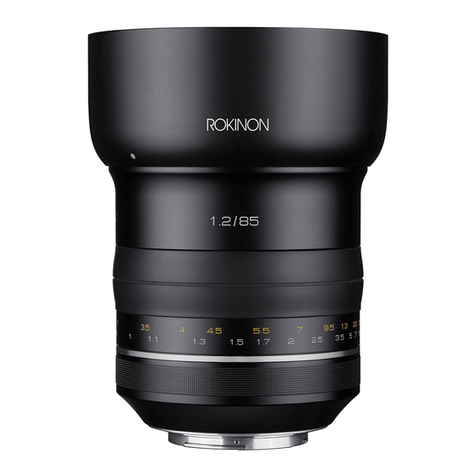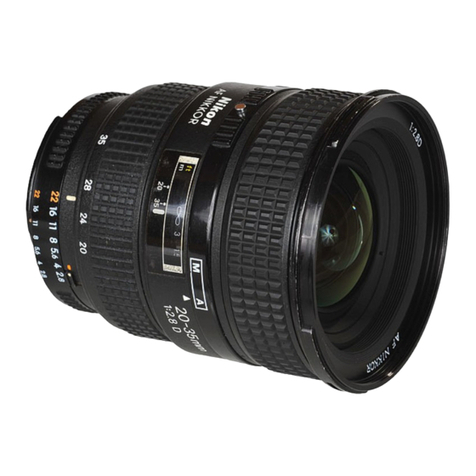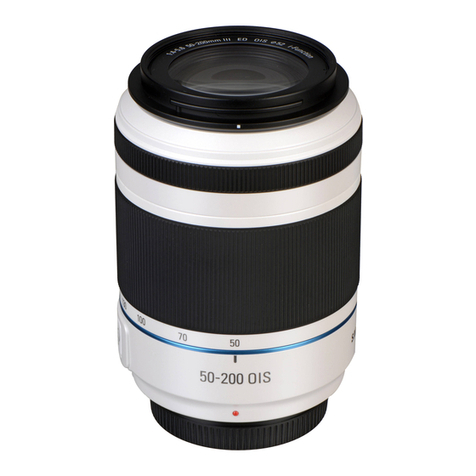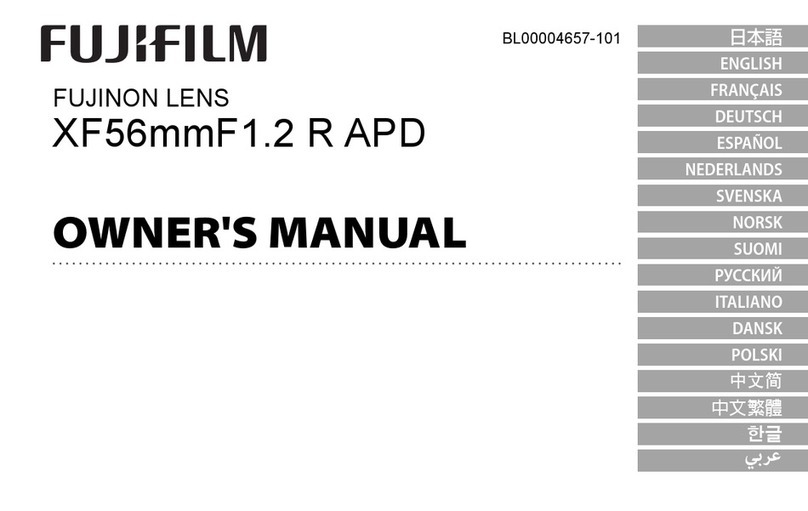
ABOUT OS {OPTICAL STABILIZER) FEATURES
This OS (Optical Stabilizer) lens effectively compensates for image blurring caused
by
camera shake.
With this lens, you can take pictures at shutter speeds approx 4 steps slower than
you
could without using the OS function ofthis lens and can get sharp results.
Set the OS (Optical Stabilizer) switch to Mode 1 (fig.3). Press the shutter button
halfway down, confirm the image
in
the viewfinder
is
stable then take the picture. (It
takes approximately 1 second to produce a stable image, after pressing the shutter
button halfway). Mode 2, detects the vertical camera shake, and overcomes blurring.
It
is
effective
on
subjects moving horizontal to the camera.
+The
blurring compensation function of Optical Stabilizer
is
effective for hand-held
shooting.
In
the following conditions, Optical Stabilizer may not function properly.
•Shots from the a moving vehicle
·If
there
is
a considerable camera motion or shake.
+Please
do not use Optical Stabilizer
in
the following situations.
·When
the lens
is
mounted
on
a tripod. • Bulb (long time exposure).
+Optical
Stabilizer function
is
powered from the camera. If the
OS
lens
is
attached to
your camera and activated, shooting capacity of your camera will
be
lower than with
conventional lenses
used
with the same camera. If
you
are not using Optical Stabilizer,
please turn OFF the OS switch,
in
order to prevent consumption of a battery.
+Be
sure to turn of OS switch to OFF position, before attaching or detaching the
lens to the camera.
+The
Optical Stabilizer continues to operate after you release your finger from the
shutter button, as long as the exposure meter displays the exposure value. Never
remove the lens or remove the camera's battery while the image stabilizer
is
operating, you could damage the lens.
+Although
the viewfinder image may appear to shake immediately after shooting
and at the start of the flash charge cycle of the built-in flash of the camera etc., it
will not cause any effect
on
pictures.
+If
the camera power
is
turned off or lens
is
detached while the Optical Stabilizer
function
is
in
operation, the lens may emit a chattering noise, but this is not a
malfunction.
+For
Sony and Pentax mounts, it is only possible to use the OS function,
incorporated
in
this lens, with camera bodies which support motors driven by
ultrasonic waves such as HSM. When using the OS function, please turn off the
optical stabilizer function of the camera body and set the OS switch of the lens to
ON. When using the camera's optical stabilizer function, please set the OS
switch of the lens to OFF and turn the camera's optical stabilizer function on.
+If
using this lens with a KONICA MINOLTA DYNAX I MAXXUM 70, DYNAX I
MAXXUM
50
or SONY A100 camera, please turn the OS switch of the lens off
before turning the camera body off. The OS unit of the lens will not fix into its
position if the camera body is turned off before switching off the lens' OS
mechanism. Ignoring this notice might cause damage to the lens.
+Optical
Stabilizer feature can work with the Nikon AF cameras shown
in
the
following table. When using this lens with other camera models not listed
in
the
following table, please set the OS Switch to OFF position to cancel the Optical
Stabilizer function.
Digital SLR Cameras and
F6
*From
our homepage, you can check the latest information regarding the camera
models, which can
be
used with Optical Stabilizer function.
TRIPOD SOCKET AND COLLAR
This lens has a detachable tripod socket. When the locking knob
on
the collar
is
loosened, the lens and camera can rotate freely to easily position the camera
horizontally or vertically (fig.4
).
To
remove the tripod collar from the lens, first loosen and then disengage the locking
knob. (fig.5)


